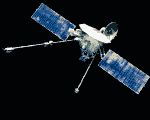
(1) TRANSIT REQUEST
In order to assign a vessel in the system informatic a transit request must be received from the vessel owners/or agent at one of the port management offices.Vessel transit request usually take one of the following forms:
- Booking in advanced; usually three or four days prior to arrival at port.
- Suez Canal Authority informed by telex or agent that ship will arrive within 48 H.
- Suez Canal Authority advised that ship will arrive at any time.
A vessel that have previously transited the Canal will have a unique Suez Canal file NR (Suez Canal Authority ID).
It is required that this ID must provided when the request for transit is made.
If the vessel is not currently in system informatics and data base, the port management operator will create vessel particular and automatically assign a unique Suez Canal Authority ID.
(2) VESSEL ARRIVALS
- A vessel approaching the Canal at either end is requested to call the port management office.- The vessel is requested to declare her position, her international call sign and Suez Canal Authority ID.
- The vessel will be tracked automatically by the radar subsystem and displayed on the graphic display then the port management operator will be able to infolink it with the informatics on the arrival list.
(3) VESSEL REACHING THE ANCHORAGE AREA
At both Port Said and Port Tewfik, anchorage areas are indicated on radar graphic displays.Whenever a linked vessel reaches an anchorage area, the informatics will record the time the vessel reaches an anchorage area.
(4) VESSEL BERTH LIST
The port management office will continue tracking the vessel till entering the assigned berth location and stop and vessel berth list is created in the informatics.Each berth location will be indicated on the port management graphic displays as well as Ismailia graphic displays.
The vessel berth list will refresh periodically to reflect any going changes to the port operators.
(5) CREATION OF THE TRANSIT PATTERN
The main management center at Ismailia will generate the optimal convoy pattern based on the vessel currently in the waiting areas or estimated to be in the waiting areas by the limit times.The transit pattern will determine each convoy's start time and maximum time width.
(6) CONVOY CREATION
At Port Said and Port Tewfik, the harbour master will order the vessels in the convoy patterns that were generated by the main management Center at Ismailia.The official convoy list will only be comprised of vessels that have marked as eligible for transit (paid the transit fees, performance certificate... etc.).
(7) ASSIGN PILOT TO VESSELS
The port management office will assign the road and Canal transit pilots. Pilots list and pilot convoy list will be printed.
(8) PILOT BOARDING ORDER
After the official convoy list is created, the convoy list report will be printed. After pilot (S) have been assigned, Boarding order reports will be printed.These reports will be given to each transit and Roads pilot as part of their pilot Boarding orders.
(9) VESSEL ENTER THE CANAL
As vessels leave their berths at the port, the port management office will follow and track them till entering the Canal.As the vessels enter into the Canal their identifiers will be automatically updated to add their ID and relative position within the convoy against their displayed picture on the display at Port office and main management office at Ismailia.
(10) REAL TRANSIT PATTERN
As the convoy progress along the Canal, the real time transit pattern is displayed and plotted.The real time transit pattern screen will provide the capability of viewing real time information as X, Y positions, speed, Km positions and off axis for each vessel as well as the meteorological data of all signal station includes the wind speed and direction, visibility, current speed and direction, and height of the tide.
(11) VESSEL PASSES CHECK POINTS
Check points are the inlets and outlets of by-passes, siding, each signal station, the Canal start and the Canal end.The ordering of vessels within the convoy is re-checked at each check point. If the vessels has changed position within the convoy, this is automatically recorded in the transit history.
The informatic data base is updated to reflect the convoy and new convoy position displayed against the target.
(12) INFORMATION DISPLAYED ON THE SIGNAL STATION BOARD
As each vessel passes a signal station, the informatics will then update the signal station Boards to provide convoy progress the following information for a vessel as it passes the station.Information of vessels as vessel name, convoy position, Suez Canal Authority ID, call sign, speed, location and meteorological data will be displayed to the signal station operators or signal station PCs.
(13) VESSELS LEAVES THE CANAL
When vessels get out of range of radar the informatics will close the vessel transit and is saved as a closed transit for Historical reporting purpose.
(14) RADAR FAILURE CASE
In case of emergency or radar failure, the Canal pilot will board the vessel with Loran-C court to be installed on board the vessel by Suez Canal Authority personnel.By initializing command from the Canal main management office at Ismailia tracking by Loran-C chain is executed.
In some cases tracking by both radar and Loran-C chain will be executed to monitor the progress of vessel during their transit through the Canal in order to assure safety transit and increase Canal efficiency.
